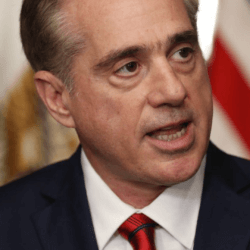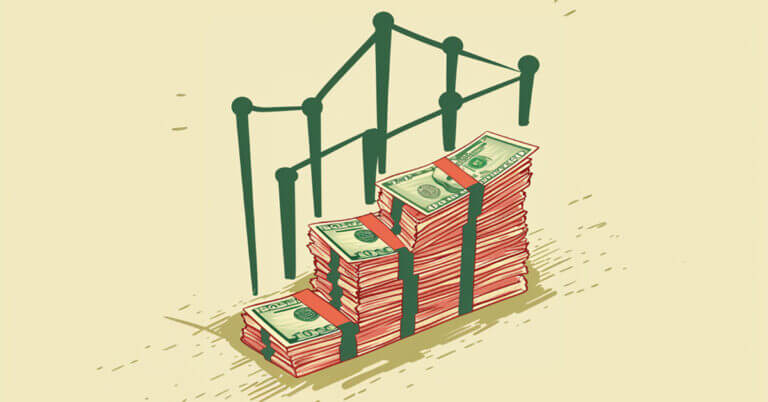September 9, 2020

A Pandemic Induced Collapse of the Way We Pay for Healthcare
For many segments of the economy the long-term consequences of the pandemic remain unknown. But for healthcare, there are flashing lights that point to severe, if not fatal, damage to the financing structure of our healthcare system.
Even prior to the pandemic, the system was stressed. The April 2020 Medicare Trustees report predicted that the Hospital Insurance (HI) Trust Fund would be insolvent by 2026. The primary source of revenue for the HI Trust Fund is the payroll tax. The potentially long-lasting unemployment caused by the pandemic means less income for the Trust Fund and an insolvency date as early as 2023. A recent Congressional Budget Office estimate places the insolvency date in 2024.[1] A reduction in the HI portion of payroll tax only hastens insolvency.

In September 2020, states have just begun to assess the wreckage on their budgets. The combination of reduced income tax receipts and higher public health and Medicaid costs means that State budgets are out of balance. Even baseline Medicaid costs will be difficult to sustain, much less a Medicaid program with swelling enrollment due to a sinking economy.
Employer-sponsored health insurance covered 156 million workers prior to the pandemic. Companies laid off or terminated millions of workers, leaving them to rely on their own means for coverage through COBRA, the Affordable Care Act, Medicaid, or simply live without insurance. Employers will cut costs to return to profitability, including the cost of health insurance benefits of the employees that weathered the storm.
Once the health delivery system recovers from the pandemic-induced downturn, we will have the same costs of healthcare but a very broken financing system. The usual method for “fixing” healthcare is to shift costs away from the problem to a more stable financing source. Cost shifting lets policy makers avoid the harder work of actually addressing about the underlying problems.
The harsh reality is that there are no more places to shift costs. March through August of 2020, the Federal government has spent trillions in an attempt to stabilize the economy. It took from the founding of our country until 1982 to go $1 trillion in debt. The deficit for June 2020, just one month, approached $1 trillion. Herbert Stein famously said, “If something can’t go on forever, it won’t.” Our healthcare system may have reached the “it won’t” point.[2]
The pandemic has exposed two unavoidable realities about our healthcare delivery system. The first is that in today’s healthcare system, race and zip code are the most determinative factors of health outcomes. The second is our system’s failure to provide access to care for all citizens that need care. An invisible virus has exposed our system as one that is too fragmented, inefficient, and largely unprepared to deliver services at sites where patients need them.

In less than two months we will have a national election. Both of the major candidates have some form of “health reform” in their platforms. However, the assumptions behind both plans are built on a financing structure that no longer exists. Healthcare delivery and payment are perhaps the most important healthcare issue going into the election, however both candidates either don’t know the financial instability, or they are actively ignoring it.
Every President since FDR has embraced the idea of universal coverage for all Americans. That goal has remained elusive, but the pending collapse of the financing system offers the opportunity to realize this dream. Whoever takes the Oath on January 20, 2021, will decide.
In the past, “reform” has meant incremental improvements in a broken system. What is needed now is a rapid transition to a choice-driven, multi-payer, compassionate healthcare system.
This new system must ensure universal access to care and provide market-oriented coverage for individuals, including an income-based premium support system. For employer-based coverage, the government should provide a tax preference for businesses that insure employees through premium support, so employees can choose their own plans. Having led organizations in the private and public sectors, we can attest that employees choose their health plans better than we do.
Medicare is the most immediate crisis. The 10-year cost to “fix” Medicare may top $500 billion, either in increased taxes or reductions in funding.
In broad strokes, we recommend:
- Ending the regressive payroll tax and rolling it into a more progressive income tax system.
- Ending the fee-for-service payment system for new and current Medicare beneficiaries, and offering them insurance plans that suit their needs, much like Medicare Advantage does today.
Our plan will control long-term costs through individual choice, competition and elimination of administrative waste. It will break down the outdated and inefficient distinctions between Medicare Parts A-D that are barriers to effective coordinated care. Further, actual choice among health plans will open up access in disadvantaged communities, taking a long stride toward health equality.
The alternative is to use $500 billion to make incremental changes in a broken system. The Medicare fee-for-service system is a government-run price-fixer for healthcare. It is also a playground for lobbyists devoted to maintaining the fee-for-service system and ensuring that their clients will get a piece of the $500 billion pie.
Our plan would end government price-fixing and take healthcare away from the lobbyists and give it to the patient.
What can be done for Medicare can be done for Medicaid, the uninsured, and, as we suggest, even employer-sponsored health insurance.
Obviously, the details matter, but our objective here isn’t to dwell on risk adjusters, delayed enrollment penalties, and medical loss ratios. Rather, we want the necessary reforms of our health system to be part of the national election conversation. While it might be politically unpopular to take on a change of this magnitude, we fear that that ignoring a failing healthcare system until after the election will be too late. We hope the candidates and the voters heed the red flashing lights.
Want to know what healthcare executives are talking about this week? Subscribe to the 4sight Friday RoundUp on iTunes, Spotify, or where ever you listen to podcasts.
Sources
- “The Outlook for Major Trust Funds 2020 – 2030” Congressional Budget Office. There remains considerable uncertain in the CBO estimate due to the accelerated Part A payments and the delayed personal income tax payments.
- The Congressional Budget Office also confirmed that the debt held by the public will exceed GDP for fiscal year 2021. This has long been considered a “tipping point” for the ability to finance deficits.
Co-Author
 David Shulkin is a former Secretary of Veterans Affairs and a physician.
David Shulkin is a former Secretary of Veterans Affairs and a physician.





